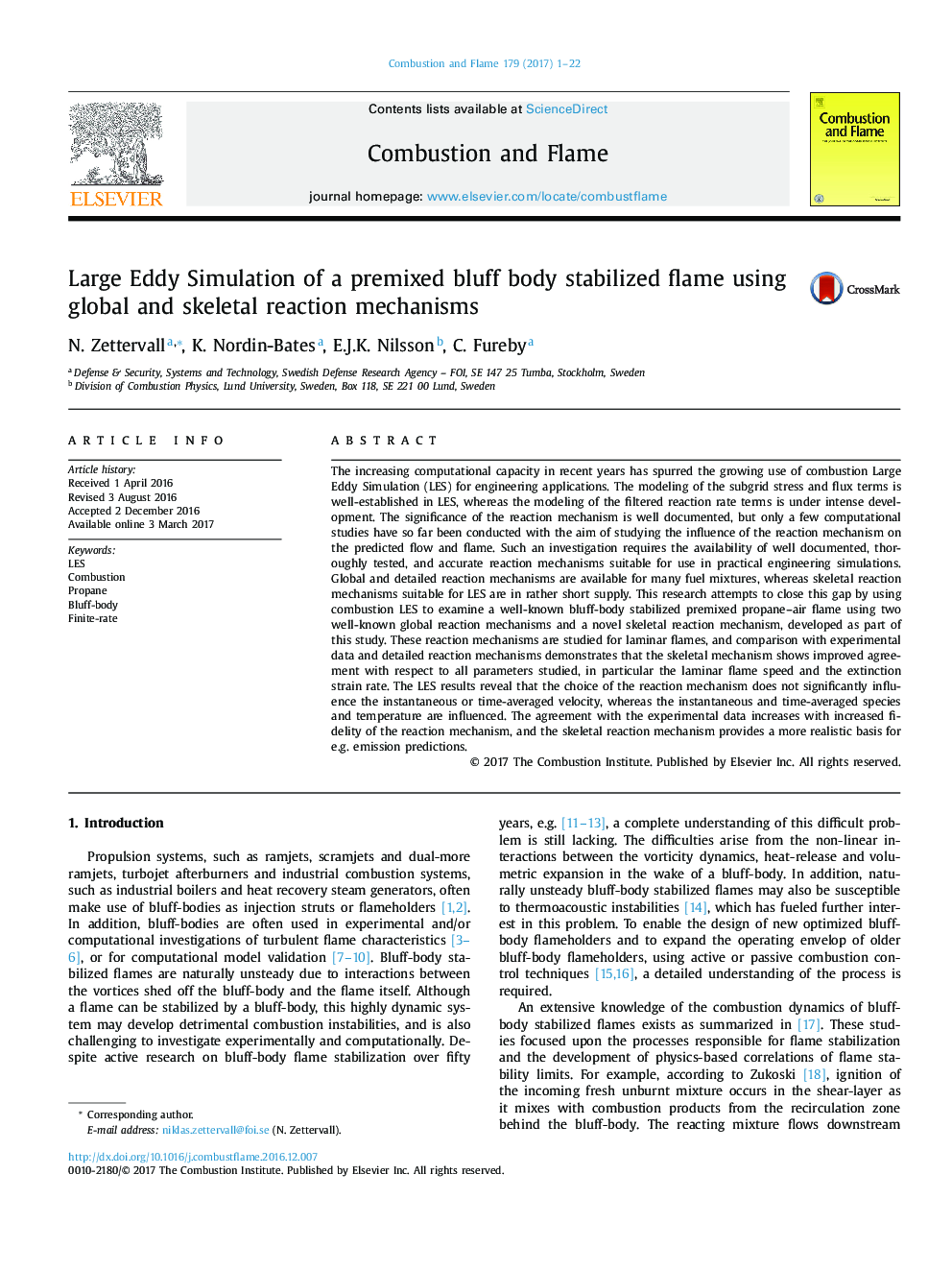| کد مقاله | کد نشریه | سال انتشار | مقاله انگلیسی | نسخه تمام متن |
|---|---|---|---|---|
| 6468240 | 1423558 | 2017 | 22 صفحه PDF | دانلود رایگان |

The increasing computational capacity in recent years has spurred the growing use of combustion Large Eddy Simulation (LES) for engineering applications. The modeling of the subgrid stress and flux terms is well-established in LES, whereas the modeling of the filtered reaction rate terms is under intense development. The significance of the reaction mechanism is well documented, but only a few computational studies have so far been conducted with the aim of studying the influence of the reaction mechanism on the predicted flow and flame. Such an investigation requires the availability of well documented, thoroughly tested, and accurate reaction mechanisms suitable for use in practical engineering simulations. Global and detailed reaction mechanisms are available for many fuel mixtures, whereas skeletal reaction mechanisms suitable for LES are in rather short supply. This research attempts to close this gap by using combustion LES to examine a well-known bluff-body stabilized premixed propane-air flame using two well-known global reaction mechanisms and a novel skeletal reaction mechanism, developed as part of this study. These reaction mechanisms are studied for laminar flames, and comparison with experimental data and detailed reaction mechanisms demonstrates that the skeletal mechanism shows improved agreement with respect to all parameters studied, in particular the laminar flame speed and the extinction strain rate. The LES results reveal that the choice of the reaction mechanism does not significantly influence the instantaneous or time-averaged velocity, whereas the instantaneous and time-averaged species and temperature are influenced. The agreement with the experimental data increases with increased fidelity of the reaction mechanism, and the skeletal reaction mechanism provides a more realistic basis for e.g. emission predictions.
Journal: Combustion and Flame - Volume 179, May 2017, Pages 1-22